24
Mar 2020Boring Bangongshi: the Chinese Office Comic for Learners
So the team here at AllSet Learning has created a new thing! It’s an office-centric comic strip giving learners little bite-sized chunks of office language, and it’s called Boring 办公室 (Bàngōngshì). It was not originally intended to be COVID-19-focused, but it kind of turned out that way (for now).
Here’s the intro:
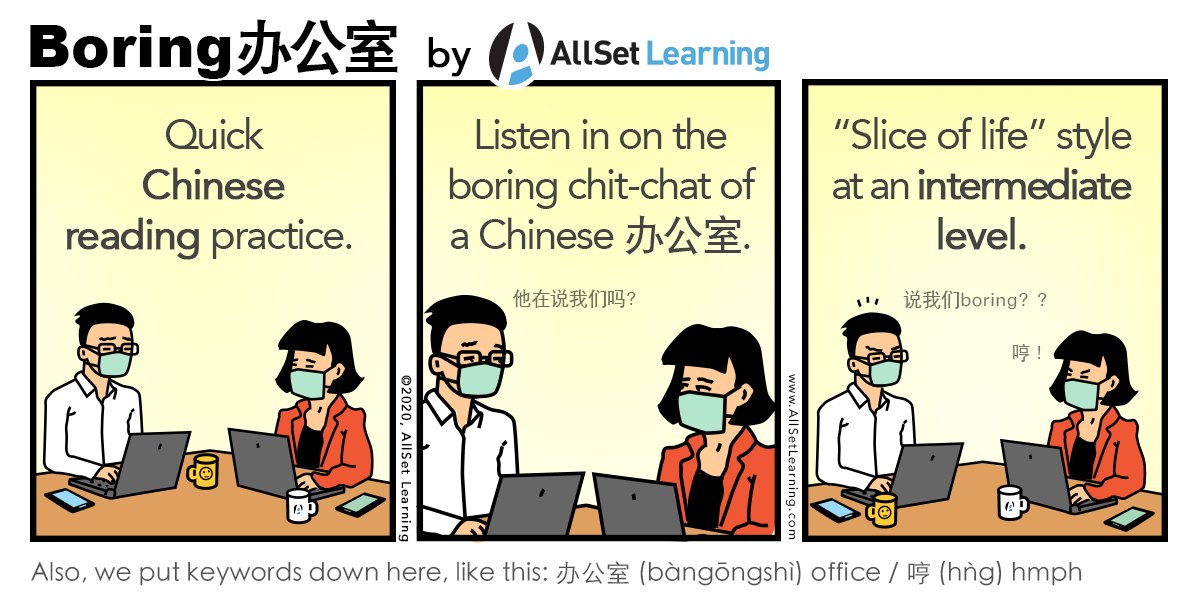
And here’s a taste of the comics:
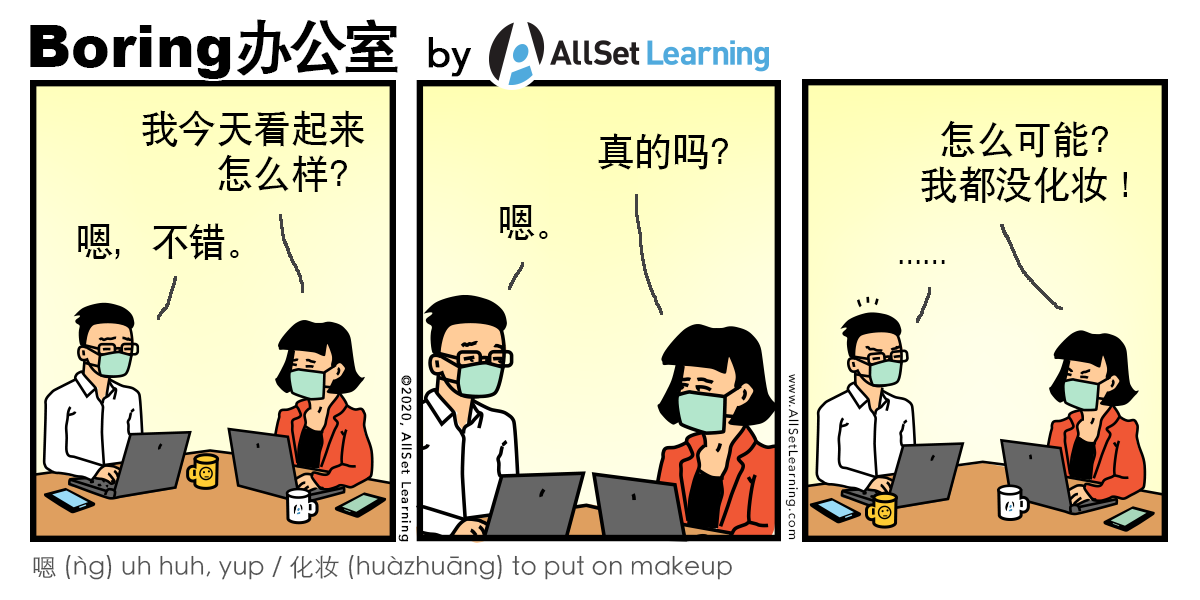
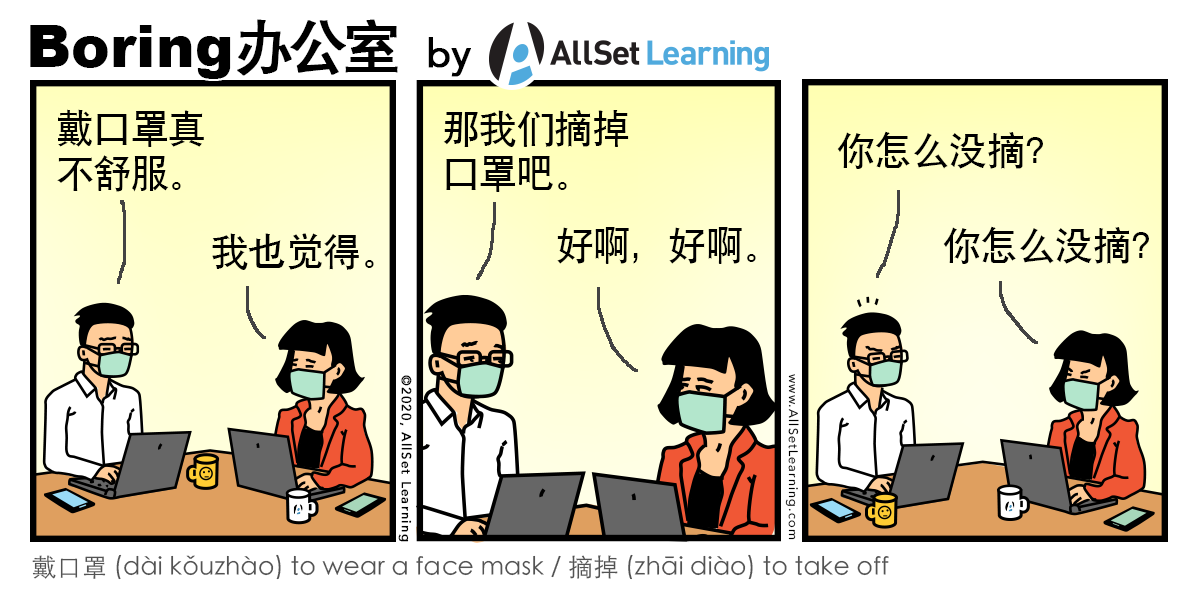
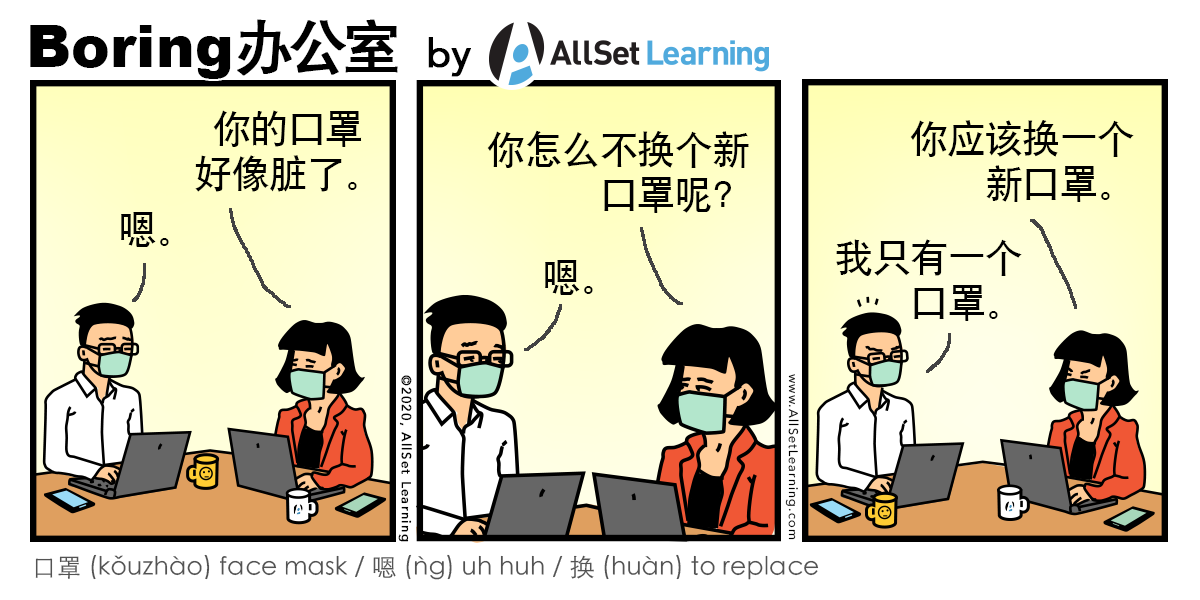
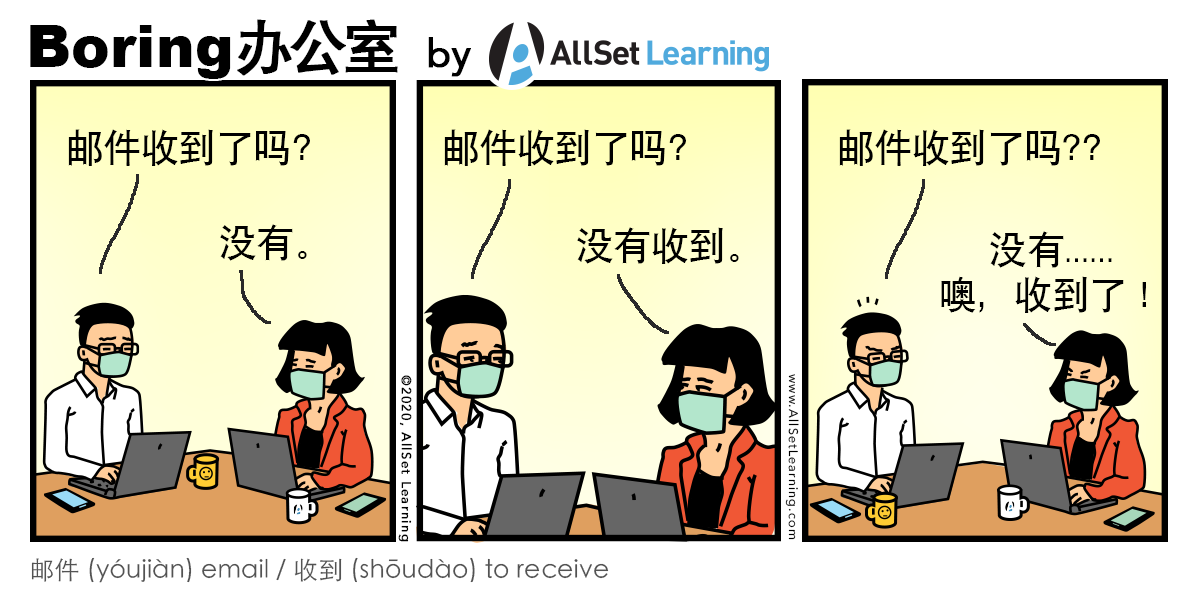
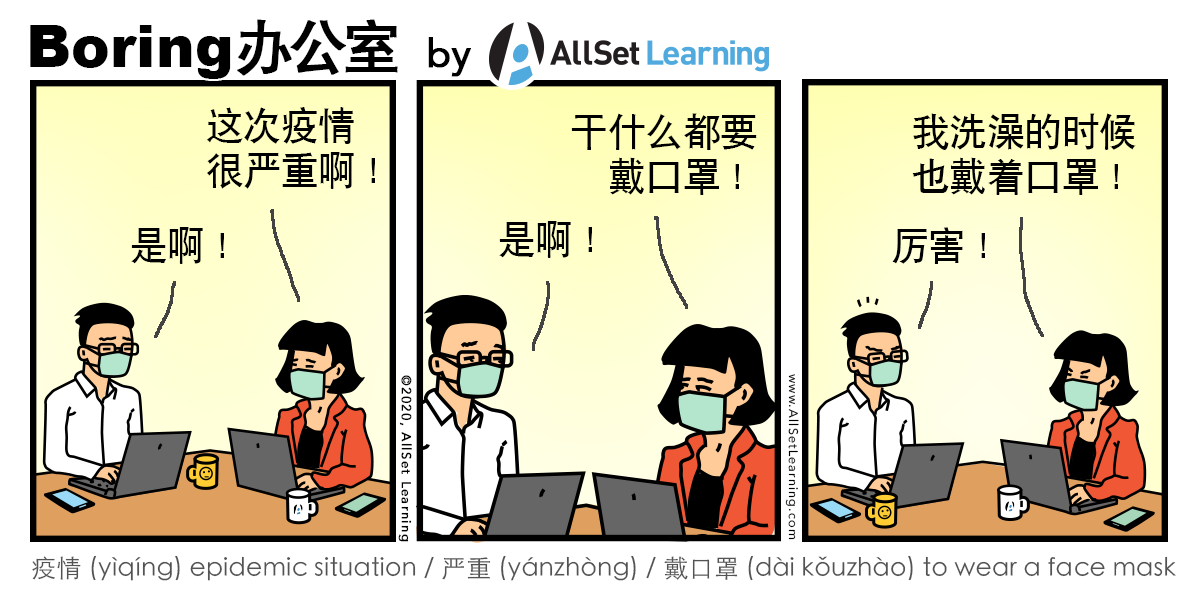
You can click through each comic to get the full text of the dialog, grammar links, editor commentary, etc.
We just launched it, and there are plenty more comics in the pipeline.
So, please: share, discuss, criticize! If you read it, don’t find it funny, but keep reading, that is a win! We’re just trying to create material that learners don’t mind reading, at a level slightly higher than what’s more widely available (but still not too high).
Boring 办公室 (Bàngōngshì).
19
Mar 2020In Money We Trust

Pretty sure this is unironic?
The name of the shop is 钱店, literally “Money Shop.” This is one of those cases where traditional characters (錢店) are used in mainland China for stylistic effect.
This is a clothing and accessories shop near Zhongshan Park in Shanghai.
17
Mar 2020Unwarranted N-Word: Crimes of Song Lyric Translation into Chinese
I’ve been using QQ Music for years already. It’s one tenth of the cost of Spotify, and it has almost all of the songs I want to listen to (plus no VPN required!). It has English lyrics for most of its songs, and sometimes even Chinese translations of those English lyrics.
I’m quite the reader of song lyrics, and sometimes QQ Music lets me down in weird ways. The first way is just bad translation. Song lyrics are a translation challenge no matter what, and I’m forgiving, but sometimes the translations into Chinese are just plain bad.
The Used
Do you remember that emo band called The Used? Here’s a YouTube video to refresh your memory:
Anyway, what do you think this band’s Chinese name is? Translated literally, it would be something ridiculous like 被利用着. Nope. This is it:
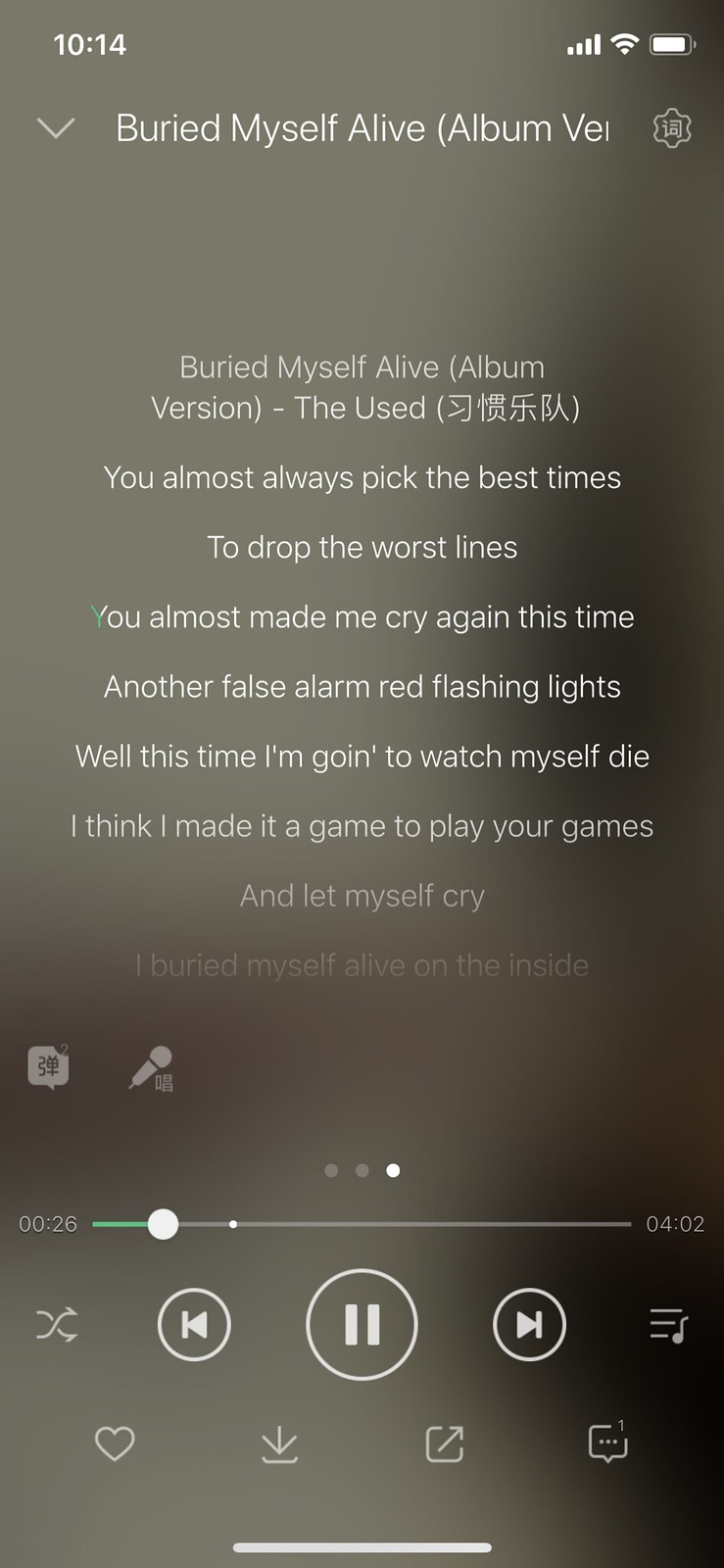
习惯乐队. 习惯 as in “customs” or “habits,” and 乐队 as in “band.” The word 习惯 also means “to get used to” (doing something), so some translator got the words right, but badly misunderstood the meaning of the band’s name. I guess he was thinking the band’s name meant something like “Getting Used to It”?? No idea.
This kind of translation mistake is fairly common on QQ Music, but not common enough that it bothers me too much.
Perplexing Use of the N-Word
This next mistake, concerning Steven Cooper’s song “Born to Do,” really had me confused, though:

I randomly came across this song on QQ Music, and my kids liked it. I did a quick lyrics scan, and didn’t notice any bad words, so we listened to it. It wasn’t until after listening to this song several times that I read the lyrics carefully and discovered the N-word.
I was pretty shocked, because this is a Christian rapper. WHY did he feel the need to use that word (just once) in this song?? It didn’t make any sense.
The more I thought about it, though, the more I realized that the lyric itself didn’t make any sense, and not just because of a bad transcription:
Locked in this room off through the night
Trying write
Every second of my life in this mic
It’s been a fight just to get them to
Listen and pay your attention watching
Until my n****s are bleeding
Wait, what? Who’s bleeding and why? It’s a song about how hard he tries to improve his skills at rapping because it’s what he was “born to do.” This particular part of the song is about writing.
So yes, the “n-word” here should have been “knuckles.”
How could such an offensive mistake happen? I’m sure a Christian rapper with clean lyrics takes care not to drop gratuitous N-bombs in his song lyrics.
The best I can guess is that the lyrics are transcribed by machine, not be a person. It’s kind of weird that a computer would identify the N-word. I mean, you can’t have it popping up randomly in Celine Dion songs or Disney lyrics, right? But maybe if a song is classified as rap, then the “ban use of the N-word” toggle is switched off.
Here’s how that section should have gone:
Locked in this room all through the night
Trying to write
Every second of my life in this mic
It’s been a fight just to get them to
Listen and pay attention watching
Until my knuckles are bleeding
There’s one final strange thing happening here, though… Although the English lyrics contain the N-word, the Chinese lyrics contain a translation of the word for “knuckles”: 指关节.
…and now I am totally at a loss to explain this!
11
Mar 2020Coronavirus Lockdown in Shanghai: One Month In
I came back from Chinese New Year holiday in Nagoya, Japan on February 10 to a Shanghai already in lockdown over the novel coronavirus, now known as COVID-19. I’ve been getting lots of questions from friends all over the world about how things are going in Shanghai (especially as the virus continues to spread globally), so I decided to share a bit more about our situation in Shanghai, one month in.
Work
The official CNY holiday was extended, and we started working from home after that, until February 14th. The following week, starting February 17th, we returned to the office to lots of required face masks, registration, and disinfectant. Very few people were at the office, and one of my co-workers was still in 14-day self-quarantine after returning from Shandong. It was easy to avoid human contact! Only one of my co-workers elected to keep the face mask on in the office.
It’s March already. All the same protective measures are in place, but with a bit less “vigor,” you could say. More and more people are coming back to the office, but the morning line for the elevator is nowhere near what it was yet. (I suppose a lot of companies are discovering that working from home isn’t that bad?)


AllSet Learning‘s face to face consultancy for learning Chinese has definitely taken a hit, as many of our clients are either (1) not back in Shanghai yet, choosing to wait out the virus abroad (not sure that’s going too well!), or (2) dealing with a lot of uncertainty and craziness for work due to the virus, and thus not able to do lessons. One client even left China with his family around CNY and decided not to come back.
Fortunately, AllSet is doing more and more online lessons as well as other products, so we’re able to weather this storm. One thing that would make this ordeal much easier is a reduction in our office rent, but our landlord insists that he hasn’t gotten a break in rent from the office building owner, and thus can’t give us one. Other tenants pushing for it hasn’t helped, either. Situations like this make the economic cost of the virus quite lopsided.

My wife has been doing a rotating thing where in the first week, each person went into the office one day a week, and worked from home the other 4. Then 2 days a week in the office, 3 at home. This week it’s up to 3 days in the office, 2 working at home. Seems like a smart, cautious way to gradually increase the numbers of people at the office while also monitoring and controlling possible infections.

School
My kids are at home through all this. My son is young enough that the missed school doesn’t really matter, but my daughter in second grade has been doing regular online lessons since last week (with homework). It seems like she’s even learning something!

So we haven’t had to pay for my son’s tuition at all yet this semester, but my daughter’s was paid (a bit late, while they figured everything out). It’s unclear how the school semester is going to play out. I had a fun summer vacation planned in the US, but that’s all been canceled. I fully expect the school year to be extended into the summer to make up for missed school (and low efficiency of the online methods tried so far). Canceling summer vacation would be such a China thing to do, unfortunately…
It’s still cold outside, so my kids aren’t super stir-crazy yet, but they’re not getting enough exercise.
Home
The main differences at home are:
- The kids are home, all the time.
- When you have food or packages (kuaidi) delivered, you have to go out to the front gate to pick it up (the delivery guys are not allowed in).
- When you go in or out of the compound, you need to wear a face mask (I tested this going out one morning last week, and the guard wouldn’t let me out of my own compound without a mask on!).
- Every time you come back into your compound, your temperature gets taken.
If you leave your own apartment and stay within the compound, no one really says anything if you don’t wear a face mask.
Some pictures of various apartment complexes around the Shanghai Zhongshan Park area:


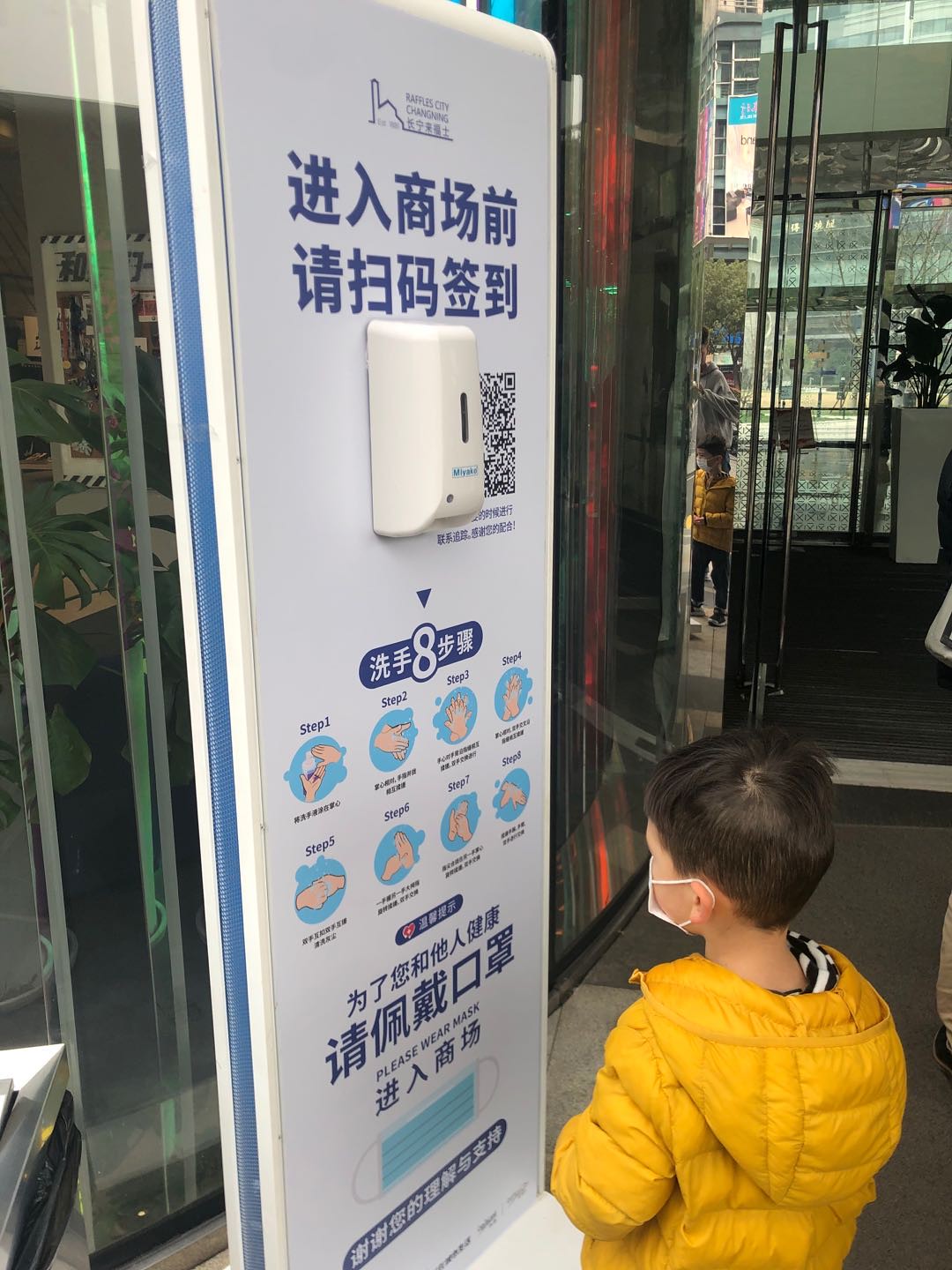

Around the City
I got that haircut on February 19th, but for the most part, barber shops are still closed. The ones that are open are the small independent ones. The big chains like Yongqi and Wenfeng are all still closed.
Most restaurants have gone into “take-out only” mode. Starbucks, one of the first well-known brands to announce store closures, is a good example. After closing for 1-2 weeks, Starbucks reopened in “take-out only” mode. Just to step inside the store, you have to be wearing a mask and have to consent to your temperature being taken (this is the new norm for essentially any public building).



Still, many of the restaurants remain fully closed. I assume that many of the smaller ones will not be reopening at all.
I haven’t used any taxis (or Didi) at all yet this year, except for the airport taxi on February 10th. But public transportation seems to be working just fine. You just need to wear a mask, and there’s a temperature check for the subway.
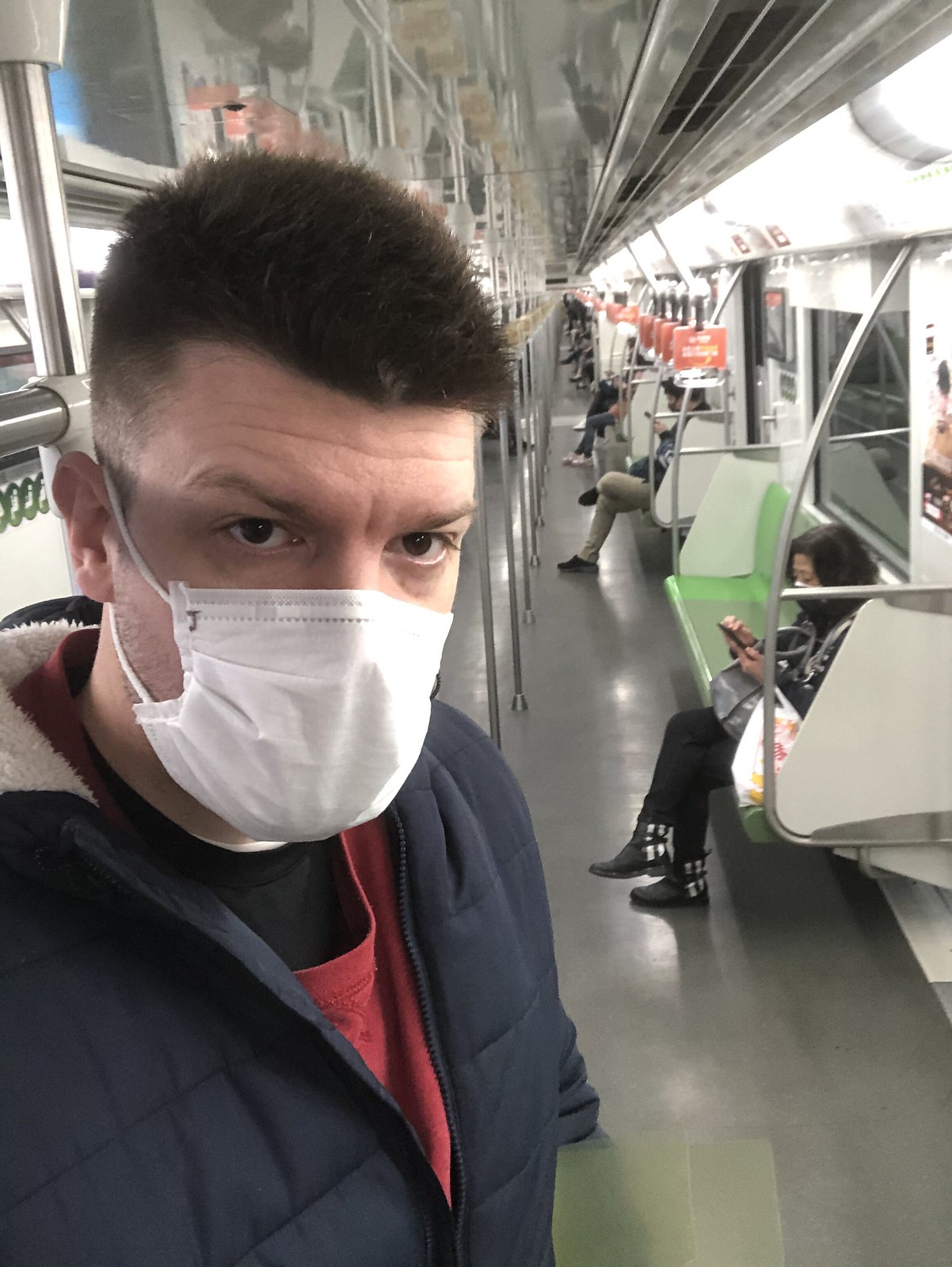
Signs related to COVID-19 are everywhere, such as reminders that wearing a face mask is a requirement to enter a building.
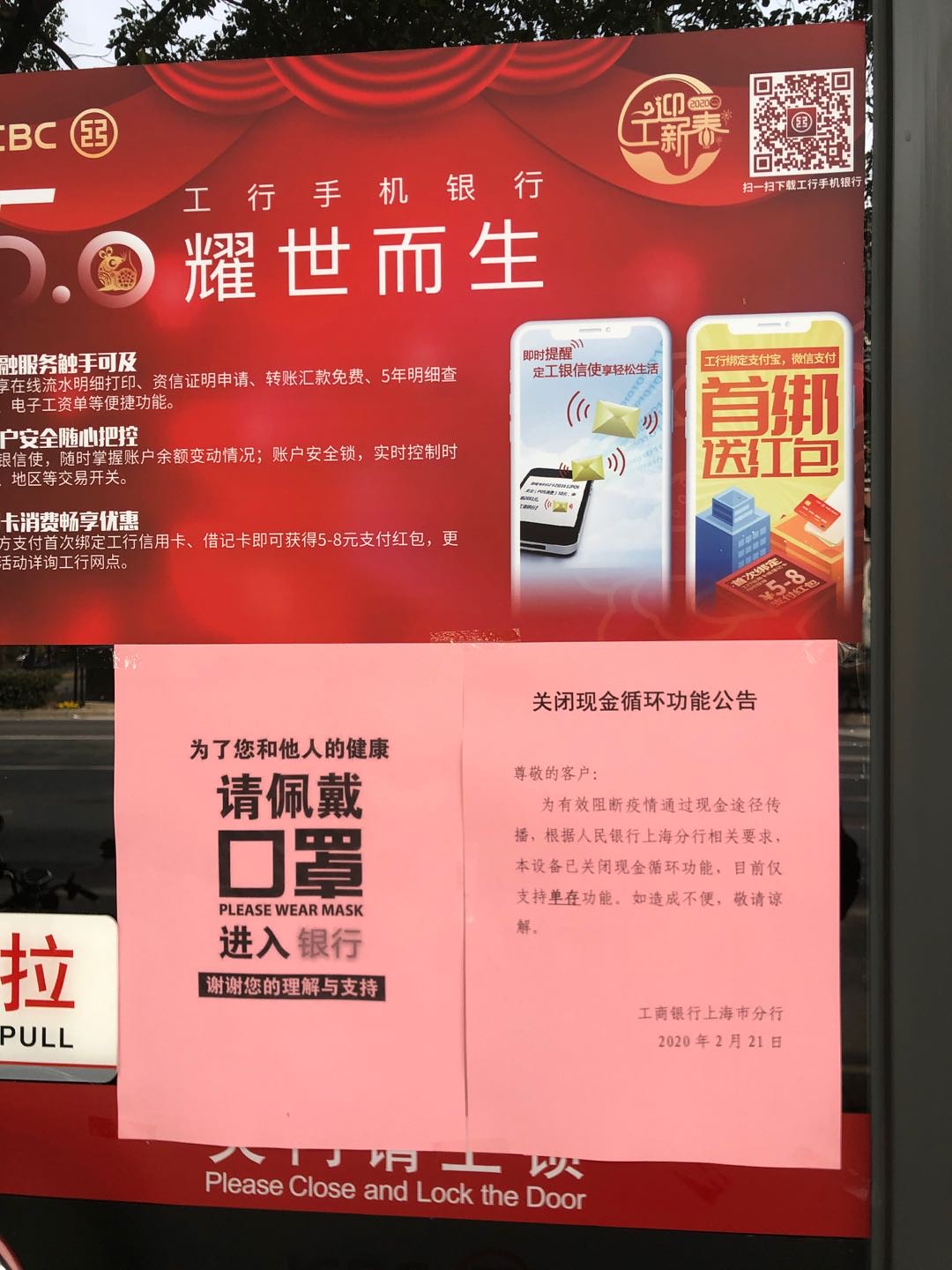



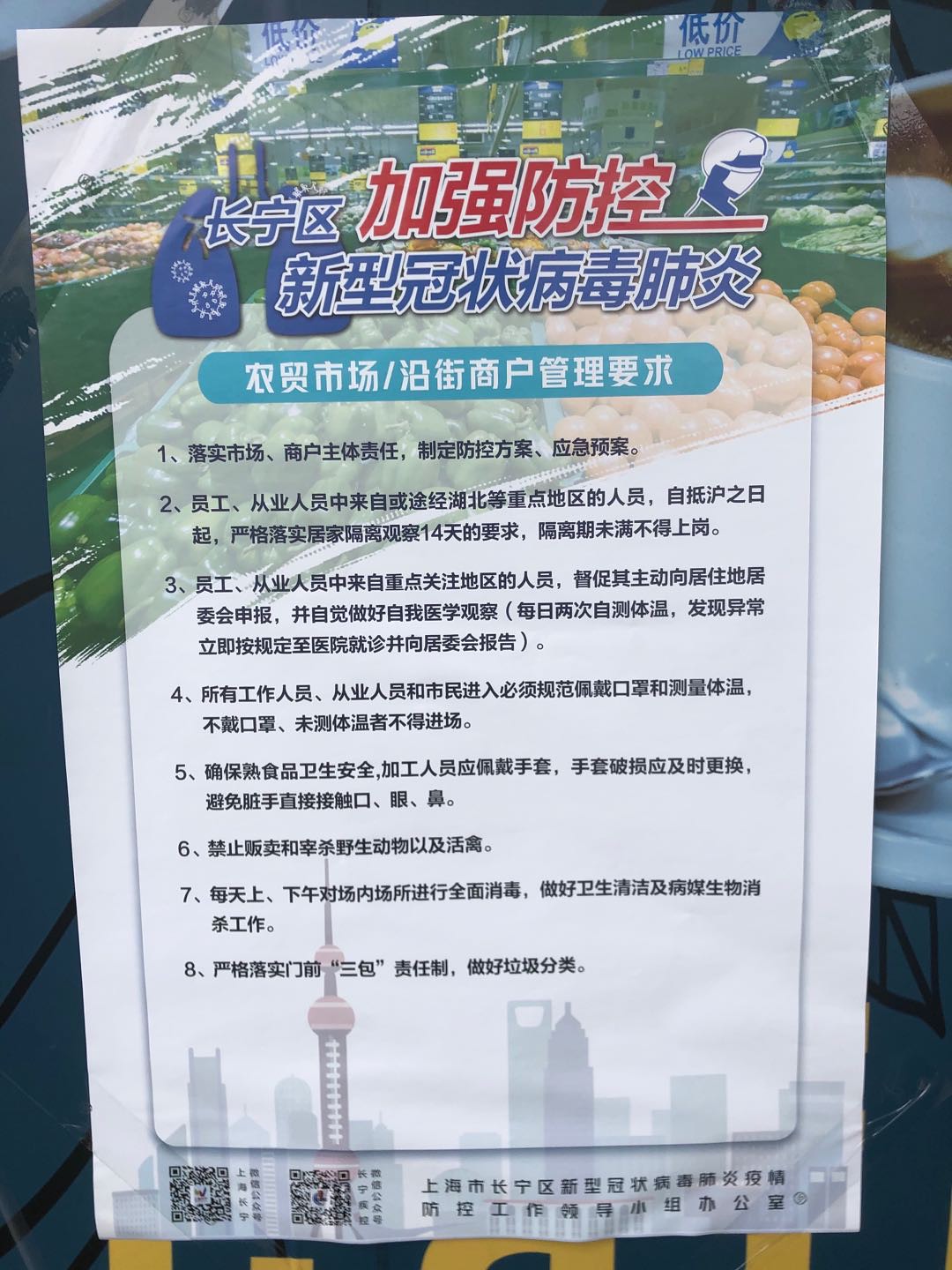
In general, the overall atmosphere in Shanghai is resignation or possibly annoyance. There was some minor panicking going on over COVID-19 about a month ago, and I saw rumors flying around in WeChat, spread irresponsibly. But now things are a lot calmer. Obviously, economic worries are very real as well. We’re just waiting for things to go back to normal… if that’s what’s next.

Related: Download the COVID-19 Vocabulary PDF on this page.
06
Mar 2020Hubei Automobile Profiling?
Just another sign of the effect the coronavirus has on people:

The Chinese reads:
本车近一年
未去过湖北
The English translation is:
This car has not been to
Hubei for close to a year
The character 鄂 (È) on the license plate is the one-character abbreviation for Hubei.
I do wonder if there’s a story behind the owner of this car putting that sign up. What did his panicked compatriots do?
Related: Download the COVID-19 Vocabulary PDF on this page.
04
Mar 2020Gal Gadot in the Shanghai Subway
The last time this company’s ads featured Chloe Bennet (star of Marvel’s Agents of S.H.I.E.L.D.). Well, it seems they have a thing for female superheroes, because now Gal Gadot (AKA Wonder Woman) is all over the Shanghai Metro.




I didn’t notice this until I looked up my old blog post, but it’s kind of funny thing that she’s wearing almost exactly the same outfits as Chloe Bennet was.
I’m well aware that little boys in China loooove Marvel superheroes (my own 5yo is one of them). Aside from Hulk, Iron Man, Spider-Man, etc., they also love Captain America. I always thought this was kind of funny, since China is pretty nationalistic and has a complicated relationship with the USA. No one seems to think anything of it, though. And the love extends well into adulthood… plenty of young men are totally into Marvel superheroes, obviously (those movies sure do well here).
So this ad campaign makes me wonder how into female superheroes Chinese women are. Is that a thing? Or are they just two attractive Hollywood stars that wound up in ads in China?
27
Feb 2020Combatting the Coronavirus with Punny Propaganda
Three exhibits from the streets of Shanghai, each replacing one “yi” character of a chengyu (typically 4-character idiom) with the character 疫 (yì), which means “epidemic”:
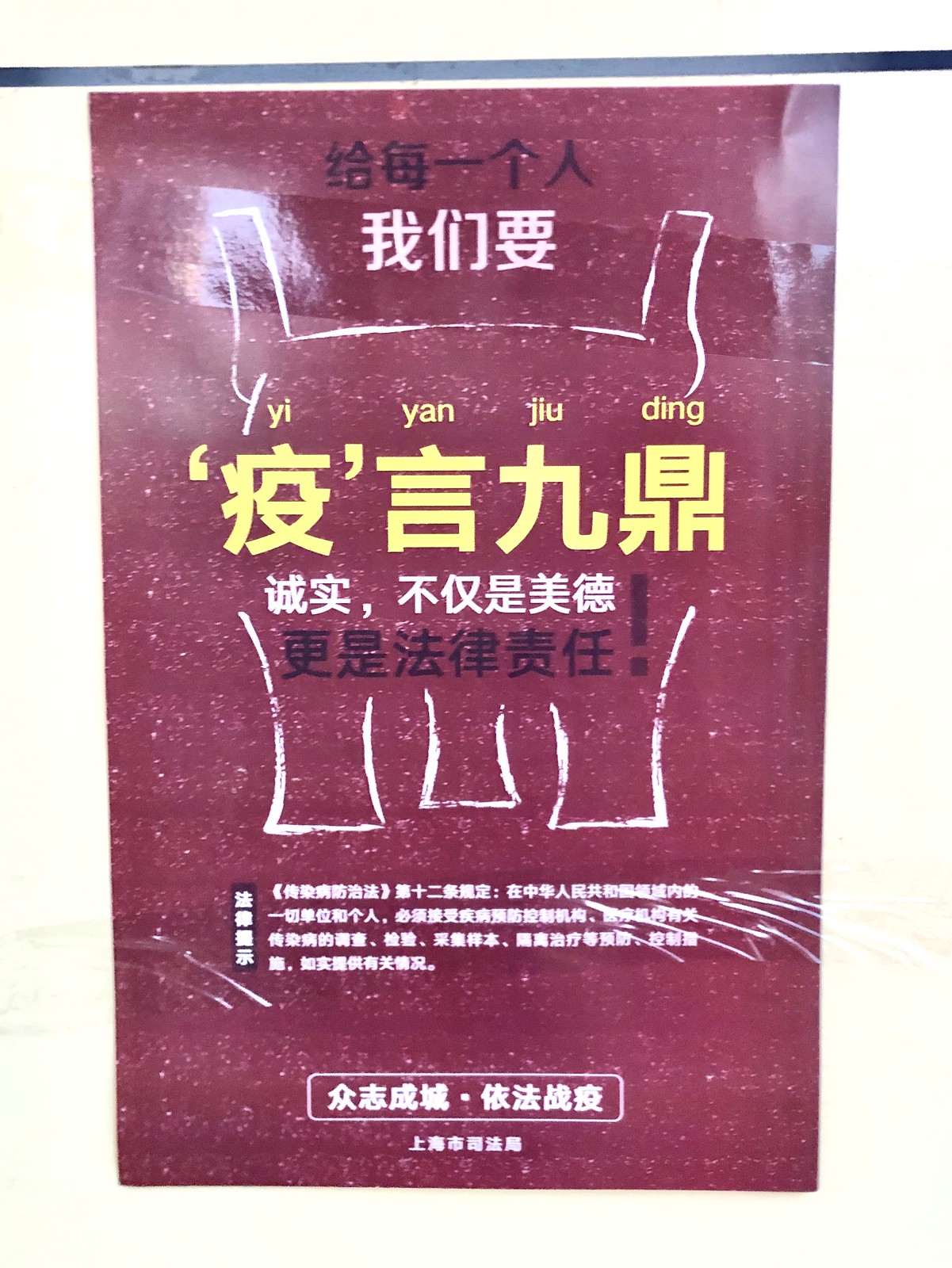
‘疫’言九鼎 is a pun on 一言九鼎 (yīyánjiǔdǐng). The original idiom refers to solemn statements, and the poster exhorts people to be honest (about their true health).

断章取‘疫’ is a pun on 断章取义 (duànzhāngqǔyì). The original idiom refers to quoting out of context, and the poster warns people not to spread unsubstantiated rumors about the epidemic (you could end up in prison for as long as 7 years if you do!).

仁至‘疫’尽 is a pun on 仁至义尽 (rénzhìyìjìn). The original idiom refers to fulfillment of moral obligations, and this poster implores people to remain compassionate while battling the epidemic.
In all fairness, “yi” is one of the most common readings for characters in Mandarin Chinese, so choosing that one to focus on with the puns really made things easier.
Related: Download the COVID-19 Vocabulary PDF on this page.
20
Feb 2020Not the Usual Haircut
All kinds of stores and shops in Shanghai have been closed for weeks. This past Tuesday, I went for a walk and noticed that a few barber shops were open. Yesterday I decided to finally get my first haircut of 2020.
It was a somewhat unusual haircut.

They took my temperature first. Everyone in the place wore a face mask (which has to be partially removed during the haircut to cut around the ears), and there was lots of disinfecting between haircuts.
Hopefully we’ll put this coronavirus affair behind us soon. March 2020 is looking much better than February!
Related: Download the COVID-19 Vocabulary PDF on this page.
11
Feb 2020Japanese Pronunciation Challenges (totally different from Mandarin Chinese)
A while back I wrote about how learning Chinese compares to learning Japanese, difficulty-wise. It’s generated a lot of interest, but one point which many readers may not have fully understood was why the Japanese “pronunciation difficulty” line rises towards the end. Refer to the graph here:
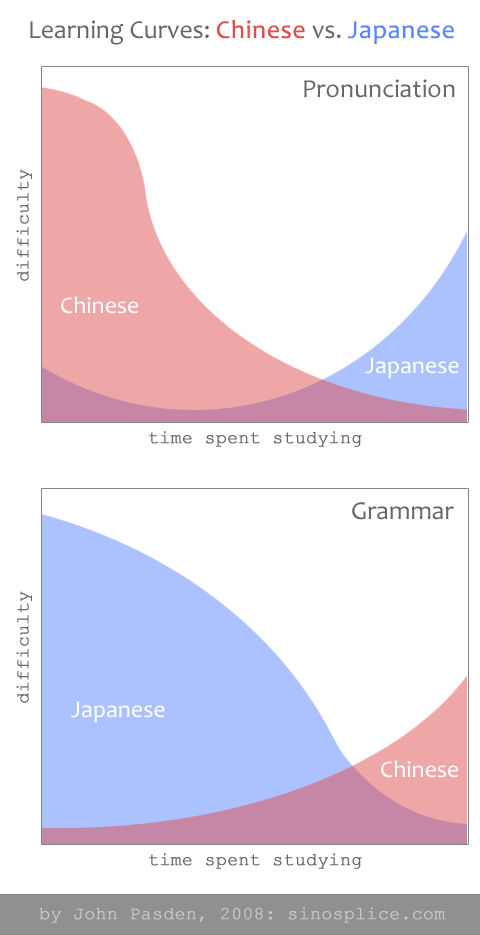
So… What makes it more difficult when you study long enough? This is what I originally wrote:
Japanese pronunciation is quite easy at first. Some people have problems with the “tsu” sound, or difficulty pronouncing vowels in succession, as in “mae.” Honestly, though, Japanese pronunciation poses little challenge to the English speaker. The absolute beginner can memorize a few sentences, try to use them 20 minutes later, and be understood. The real difficulty with Japanese is in trying to sound like a native speaker. Getting pitch accent and sentence intonation to a native-like level is no easy task (and I have not done it yet!).
Recently I discovered YouTuber Dogen. He’s got a bunch of really great videos on advanced Japanese pronunciation, and this once does a great job of summing up and illustrating the 4 main types of Japanese pitch accent:
Got it?
I don’t know about you, but I never studied Japanese pitch accent in depth as a student. Not as a beginner, and not as an intermediate to advanced student. I remember I learned what it was, but it was never given a lot of emphasis. It really does seem to be something you typically tackle once you’ve confirmed that you’re a super serious learner, and “just making myself understood” isn’t enough anymore.
This contrasts with Chinese, where the 4 tones are thrown in your face from the beginning (there is no escape), followed closely by the tone change rules.
Interestingly, when Chinese learners in China study Japanese in school, they do learn pitch accent from the get-go, and the result is much more native-like pronunciation from a much earlier stage. I’ve witnessed this, and it’s impressive. Freeing up learners from the burden of kanji (Chinese characters in Japanese) means that time and effort can be placed elsewhere. (Similarly, Chinese learners tend to be a bit weak on the non-character syllabaries of Japanese: hiragana and katakana, over-relying on their character recognition advantage to get them through reading.)
07
Feb 2020Chinese Nicknames for the Novel Coronavirus
After sharing the vocabulary about the coronavirus, I got a good question on LinkedIn about a shorter Chinese name for the virus. There are two 4-character names commonly used in Chinese:
- 新冠肺炎 (xīn guān fèiyán) lit. “New corona pneumonia”
- 武汉肺炎 (Wǔhàn fèiyán) lit. “Wuhan pneumonia”
I’m thinking about writing about the name a bit more, since there are so many variations. (Not the most exciting topic, I know, but it’s just so omnipresent these days…)
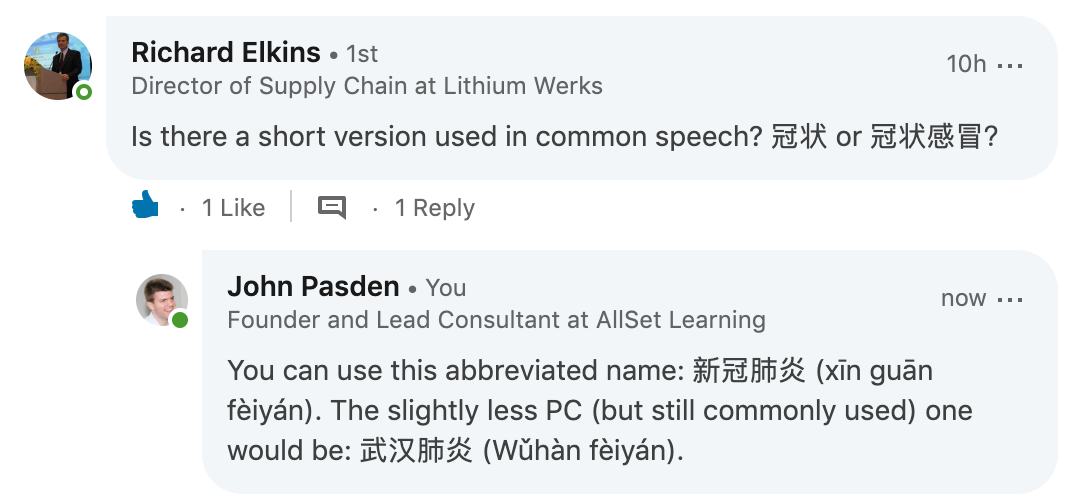

04
Feb 2020The Unavoidable Novel Coronavirus Vocabulary
When I returned with my family from Japan over the past weekend, China had changed. The spread of the coronavirus and the extensive efforts to shut it down had turned Shanghai into a ghost town. The topic absolutely dominates WeChat (and we all live in WeChat over here), whether it’s in one’s “Moments” (feed) or in various WeChat group chats, whether in English or in Chinese.
So my co-workers and I at AllSet Learning got to work creating a series of vocabulary lists to help learners of Chinese deal with this unavoidable topic. The lists are separated by level, so whether you’re only elementary or are already upper intermediate, there’s a list here for you! Do not try to study all the lists (unless you’re already upper intermediate and you’re just filling in little gaps).
Here are the lists in image form (easier to share), but there’s a PDF link at the bottom as well.





Download the COVID-19 Vocabulary PDF on this page.
23
Jan 2020Chinese New Year Quiz Time!
We’ve got lots of new stuff in the works at AllSet Learning, and sometimes it’s even relatively small projects that we can release quickly. The latest of those is our new quizzes. We’ll keep refining the core quiz app, but the first quiz is ready, just in time for Chinese New Year 2020:

Happy Chinese New Year! (Take the quiz, and if you like it, please share!)
16
Jan 2020Shanghai’s Chinese New Year Melancholy
Recently a Shanghainese friend shared this screenshot on WeChat:
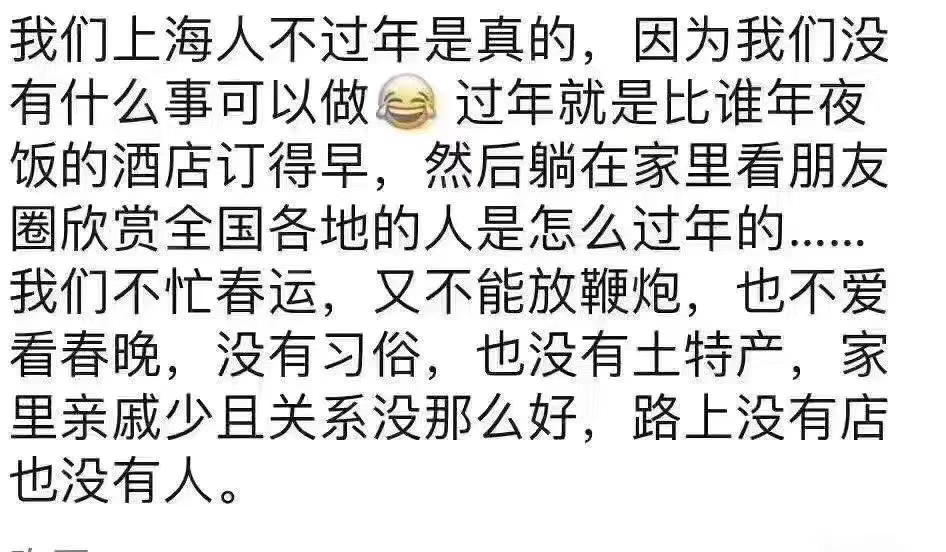
I’ll transcribe it below as text for you learners:
我们上海人不过年是真的,因为我们没有什么事可以做!过年就是比谁年夜饭的酒店订得早,然后躺在家里看朋友圈欣赏全国各地的人是怎么过年的……我们不怕春运,又不能放鞭炮,也不爱看春晚,没有习俗,也没有土特产,家里亲戚少且关系没那么好,路上没有店也没有人。
And a translation:
It’s true that we Shanghainese don’t really celebrate Chinese New Year because there’s not really anything for us to do! Chinese New Year is just competing who can make the earliest restaurant reservation for Chinese New Year’s Eve dinner [年夜饭], then lying around at home browsing WeChat Moments to see how the rest of the country is celebrating Chinese New Year…. We have no fear of the massive CNY migration [春运], and we’re not allowed to set off fireworks anymore. We don’t like the CCTV New Year’s Gala [春晚], and we don’t have any real traditional customs or local specialty foods. We have few relatives, and the ones we do have, we’re not on great terms with. There are no shops open or any people in the streets.
My immediate reaction was, “wow, this is so true! And sad!” I shared it with my co-workers, and a Shanghainese co-worker’s reaction was:
大实话。有时候我会羡慕赶春运的人们。
Translation:
So true. Sometimes I envy those people crammed into trains just to get home for Chinese New Year.
[I had to take liberties translating 春运.]
This year my family and I will spend Chinese New Year in Japan (again). At first I felt uncomfortable with this. You hear Chinese people say all the time, “Christmas is like you guys’ Chinese New Year,” and while that’s not really true in many ways, it is true in that they both are the year’s biggest holiday in their respective cultures, they both mean a lot to the people of that culture, and they’re both meant to be spent with family. But then how could my wife be OK with running off to Japan (without her parents) instead of spending CNY in Shanghai with them? I would not be OK with blowing off Christmas in similar fashion.
One of the ways I’ve made sense of this cultural issue is reflected in the post above: the Shanghainese really do have a bit of a different take on Chinese New Year, and it has evolved rapidly in recent years (as evidenced by the role of WeChat in the original post). The Shanghainese are different.
My first Chinese New Year was spent in Zhuji (诸暨), Zhejiang Province. It was cold, it was crowded, it was noisy, it was non-stop eating and card-playing and tea-drinking chatting. It was undoubtedly very Chinese. It was pretty fun for me, but as an outsider, it’s not something I would really want to commit to every year (especially if it’s not with my actual family).
Over the years, I’ve discovered that I’m not a huge fan of Chinese New Year festivities. But as the traditions have faded in Shanghai and the holiday is left something of a husk of its former self, I can’t help but feel bad for the Shanghainese.
09
Jan 2020Happy New… uhh… Year?
A reader shared this image with me:
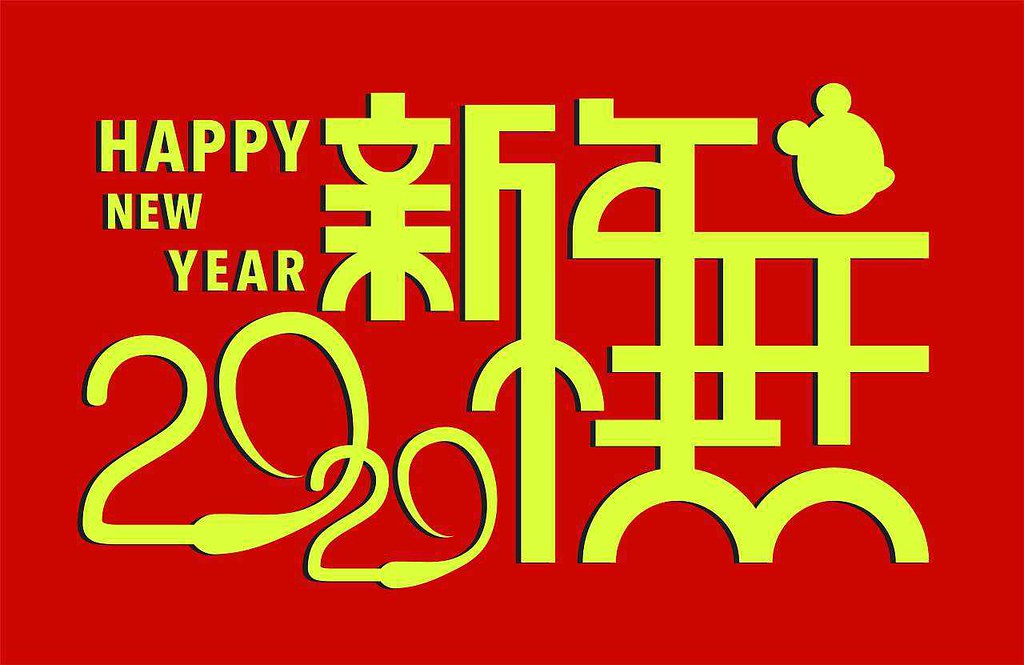
Can you read the Chinese? It’s supposed to say 新年快乐.
I can get the 新年 easily, and then I can make out the 快, but the 乐… the top sort of works, but the bottom just… huh??
It’s fun to see stylizations that don’t work sometimes, too.
P.S. The “translation” I used for the title of this post is sort of a translation of the hard-to-read Chinese. It doesn’t totally work, though, because the “year” part of the Chinese is easy to read; it’s the “happy” part that isn’t. But I didn’t like the sound of “Something New Year,” so here we are! Anyone got a better idea for a translation?
31
Dec 2019New RMB Coins in 2019
I think it really says something that it wasn’t until the last week of 2019 that I even noticed that there are new 1-RMB coins in circulation (I knew about the bills).

What does it say? Well, with mobile payments becoming the new norm in China (at least in big cities), a lot of us just don’t handle much cash anymore (especially coins).
My family just recently visited me in Shanghai, and it was rather surprising for them how “cash-less” meant “mobile payments only,” and foreign credit cards remained largely unusable. The easiest way to get money, by far, was to withdraw RMB in cash from ATMs using American debit cards. (Adding a foreign credit card to AliPay is still early and somewhat unverified.)

What I don’t understand about these RMB coins, though, is the size. Why make them smaller?? It seems like it’s more trouble than it’s worth. I guess it saves on metal, and with fewer and fewer coins actually being used every day, maybe it’s finally the right time…
26
Dec 2019“Baby Yoda” in Chinese
You’re watching The Mandalorian right? It’s the only thing we Star Wars fans have to be happy about in 2019!
Anyway, the breakout hit of the series is no secret: it’s “Baby Yoda” (not his real name).
The Chinese market is famously unimpressed with the entire Star Wars franchise, but just like everyone else, the Chinese love a cute character. So Baby Yoda’s gotta be popular in China too, right? Wellll… kinda. But anyway, we’re talking about how to say “Baby Yoda” in Chinese.
You might be tempted to go straight for the direct translation. Remembering that generic titles (like 老师) typically come come after the “namey” part of the name, you get “Yoda Baby,” or 尤达婴儿. And this name indeed does appear online (currently 216k hits on Baidu).
The Chinese-ier (and cuter) version of the name uses the slangier 宝宝 for “baby,” though, giving us the more natural translation of: 尤达宝宝 (currently 924k hits on Baidu).
So there you have it!

A few other vocabulary tidbits related to the show:
- 星球大战 (Xīngqiú Dàzhàn) Star Wars
- 曼达洛人 (Màndáluò Rén) The Mandalorian
- 原力 (Yuánlì) the Force
- 尤达 (Yóudá) Yoda
- 尤达宝宝 (Yóudá Bǎobao) Baby Yoda
- 曼达洛人 (Màndáluò rén) Mando
- 波巴·费特 (Bōbā Fèitè) Boba Fett
19
Dec 2019Li Ziqi Deserves the Hype
In the past week or so, I’ve suddenly started hearing a lot about the videos of a girl named Li Ziqi (李子柒). She lives out in rural Sichuan and likes to share videos of herself making stuff from scratch (the traditional Chinese way), which includes amazing cooking videos, but also includes creating other stuff as well.
Perhaps what makes her videos most unique (aside from stunning scenery and interesting content) is how little she talks in her videos. I like that. This is the video I watched that totally hooked me, in which she makes an amazing wool cloak from scratch, starting with just the raw wool:
This one on making soy sauce from scratch (and when I say “from scratch” I mean planting the soy beans yourself) was educational:
Li Ziqi is currently getting a lot of attention on Chinese social media. I discovered her myself through a WeChat post. It’ll be interesting to see where public opinion goes. I’ve already heard numerous cries of both “she’d make the perfect wife” and “she’s a fraud.”
Here’s an interview with her:
Anyway, I still need to watch some more videos. But my opinion thus far is that Li Ziqi makes great videos (equally interesting whether or not you’re interested in learning Chinese) and deserves the hype.
12
Dec 2019TA: Pinyin with a Purpose
Mastery of pinyin is important for every beginner learner of Mandarin Chinese. This much is widely agreed upon (although not always thoroughly executed). But what about adult native speakers of Chinese? Aside from using pinyin to type, or maybe occasionally to look up an obscure character which they can guess the reading for, there’s not much use for pinyin in their literate lives, right?
Well, you’re mostly right. Pinyin is mostly supplanted by characters among the literate Chinese population. But there is one small exception: TA.
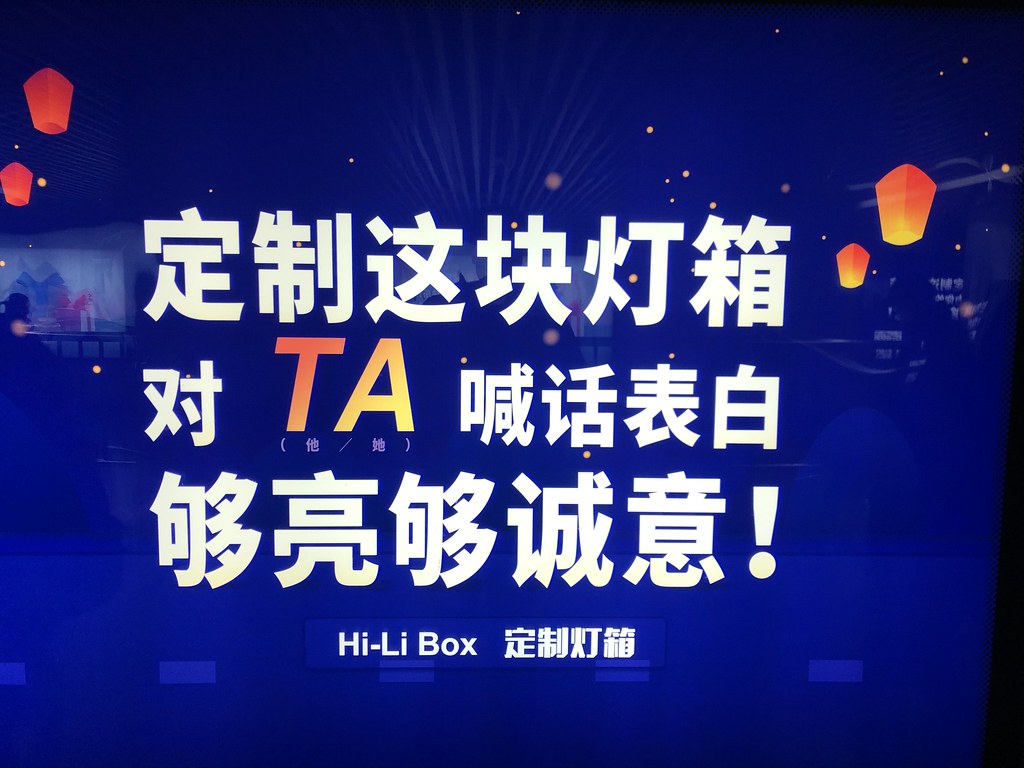
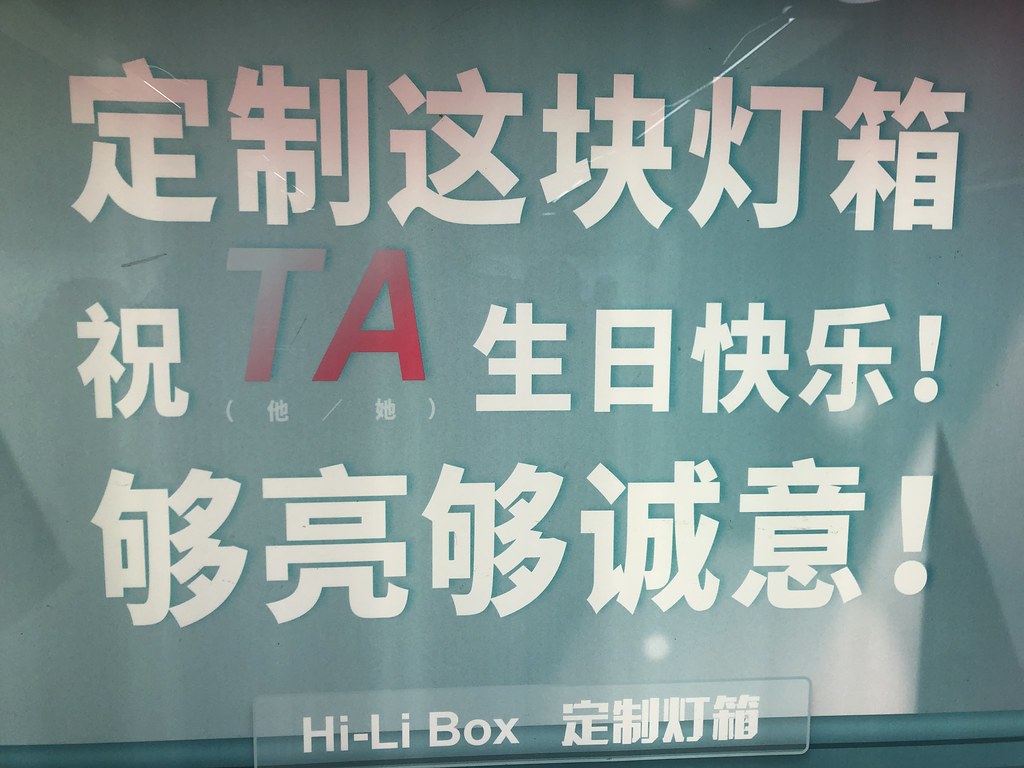
These Shanghai Metro ads are entirely in Chinese except for the “TA.” This phenomenon is fairly common in advertising in China, although these are definitely the best examples I’ve seen because not only are they incredibly clear and highly visible, but they also actually include the meaning of the pinyin “TA” in characters underneath. In case you can’t see clearly, what it says under “TA” is:
( 他 / 她 )
So the point of using “TA” instead of characters is that it leaves the gender unassigned, so that the hypothetical person referred to in the ad can be male or female in the minds of the consumers. I’ve noticed that it is typically written in all caps, as well.
This is, in essence, doing what pinyin does best: providing the sound while leaving the meaning in question. This is something that Chinese characters are often not especially well-suited for, particularly in this case.
(Ironically, the character 他 was not always a “male pronoun” but it kind of evolved that way, and only in the 20th century. Now to escape that corner 他 has been boxed into, the new generation is turning to pinyin.)
For a more scholarly take, be sure to read Victor Mair’s article on Language Log: The degendering of the third person pronoun in Mandarin (Dr. Mair always gets to these topics first!)
05
Dec 2019Free Chinese Christmas Songs to Spice Up the Holidays

It’s Christmastime again, and time to remind everyone that Sinosplice still has some awesome familiar Christmas songs in Chinese. This year I’m posting a selection of the MP3 files online in streamable format, so be sure you’re viewing the original post on Sinosplice.com if you’d like to play the songs without having to download everything.
All right, here we goooo…
Jingle Bells in Chinese
This is version 1 from the album (Mandarin Chinese):
Jingle Bells in Hakka (Hokkien) Dialect
This song is not part of the album because it is NOT Mandarin Chinese. It’s Hakka. (This one is going to have very limited use for most students; it’s just sort of a novelty for most of us.)
Santa Claus is Coming to Town in Chinese
This one is a kids’ version, version 2, also from the album (Mandarin Chinese):
Santa Claus Is Coming to Town (2)
We Wish You a Merry Christmas in Chinese
This song is especially beginner-friendly for learners of Mandarin Chinese (that chorus!):
Silent Night in Chinese
This one is a Christian classic, of course, version 2 from the album (Mandarin Chinese):
Hark! The Herald Angels Sing in Chinese
Another Christian classic, church choir style (Mandarin Chinese):
Download Christmas Songs (zipfile)
If you want to just grab them all, here you go:
The Sinosplice Chinese Christmas Song Album (~40 MB)
+ Lyrics PDFs (1.2 MB)
Disclaimer: I don’t own the rights to these songs, but no one has minded this form of digital distribution (in the name of education) since 2006, so… Merry Christmas?
MP3 Track Listing
- Jingle Bells
- We Wish You a Merry Christmas
- Santa Claus Is Coming to Town
- Silent Night
- The First Noel
- Hark! The Herald Angels Sing
- What Child Is This
- Joy to the World
- It Came Upon a Midnight Clear
- Jingle Bells
- Santa Claus Is Coming to Town
- Silent Night
- Joy to the World
Merry Christmas everybody… 圣诞快乐!
2023 UPDATE:
While we’re on the subject of Christmas and Chinese, AllSet Learning (my company) is doing a special offer with our 1-on-1 online Chinese classes. 3 lessons (one hour each) is a great quantity to try it out or gift to a loved one!

29
Nov 2019A Revamped Newsletter Approach
I’ve never pushed signing up for a newsletter, but since Sinosplice is only updated once or twice a week, I know it can be hard to keep track of posts on here or remember to check. Not everyone likes the “subscribe to blog via email” option because one email for each blog post can be too much.
I’ve had an AllSet Learning newsletter for a while, but since it’s focused mainly on product announcements, it’s been fairly infrequent in the past.
I’ve decided to do something different, though. I’m combining a sort of bi-weekly “Sinosplice blog post digest” with the AllSet Learning product newsletter and adding some other stuff in as well:
- Recent Sinosplice blog posts
- Recent You Can Learn Chinese podcast episodes
- Recent AllSet Learning blog posts and free study materials
- New AllSet Learning product announcements and promo
For anyone who enjoys this blog, it should be a meaty, useful read, released roughly every two weeks.
The signup in the sidebar of the Sinosplice website is for the same newsletter as the signup on the AllSet Learning website.

Sign up and keep the useful Chinese learning-related content coming to your inbox!
